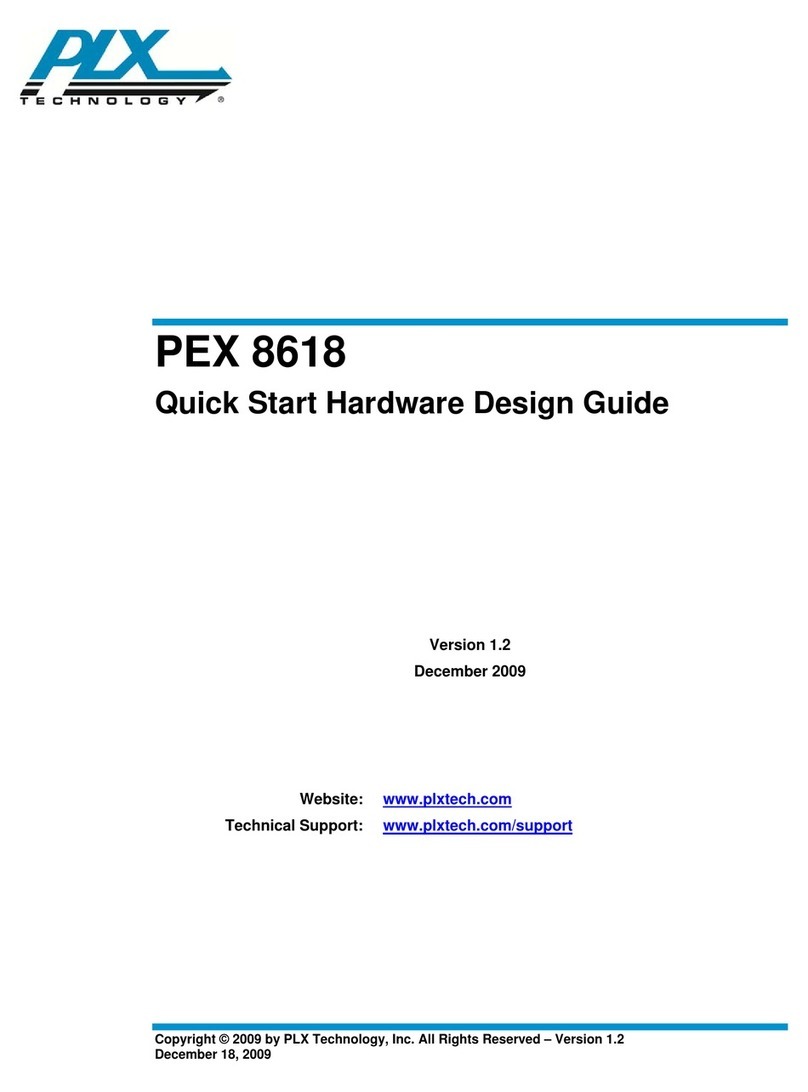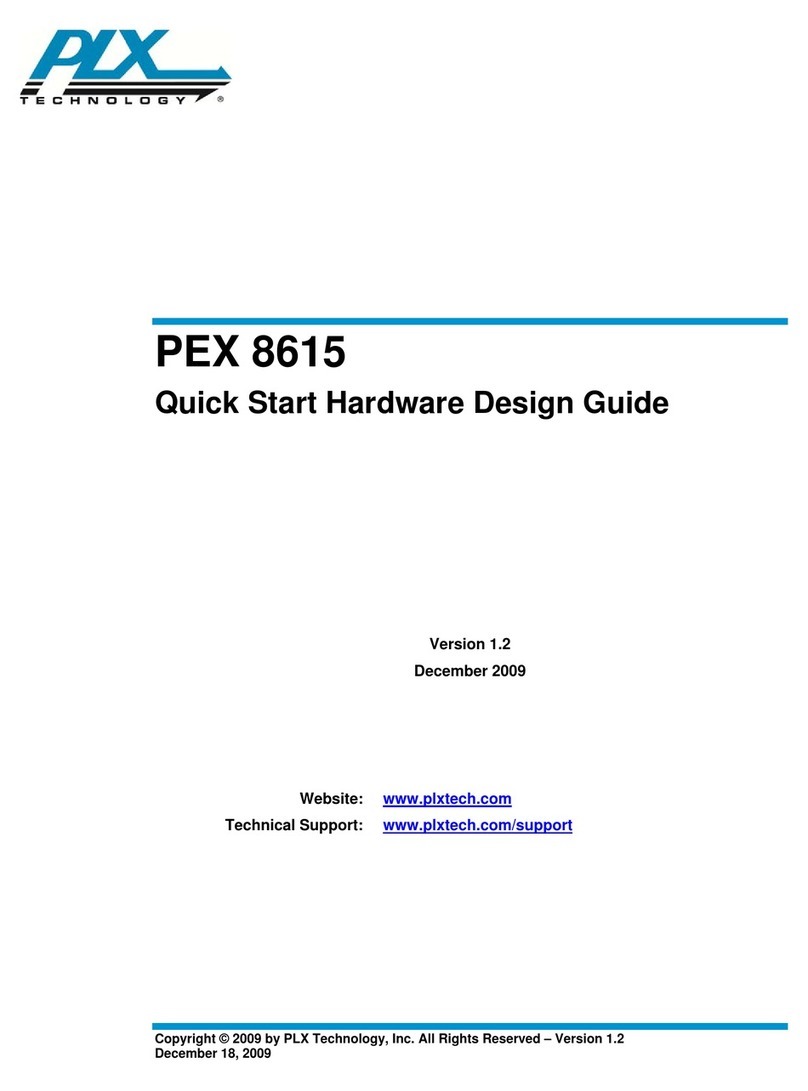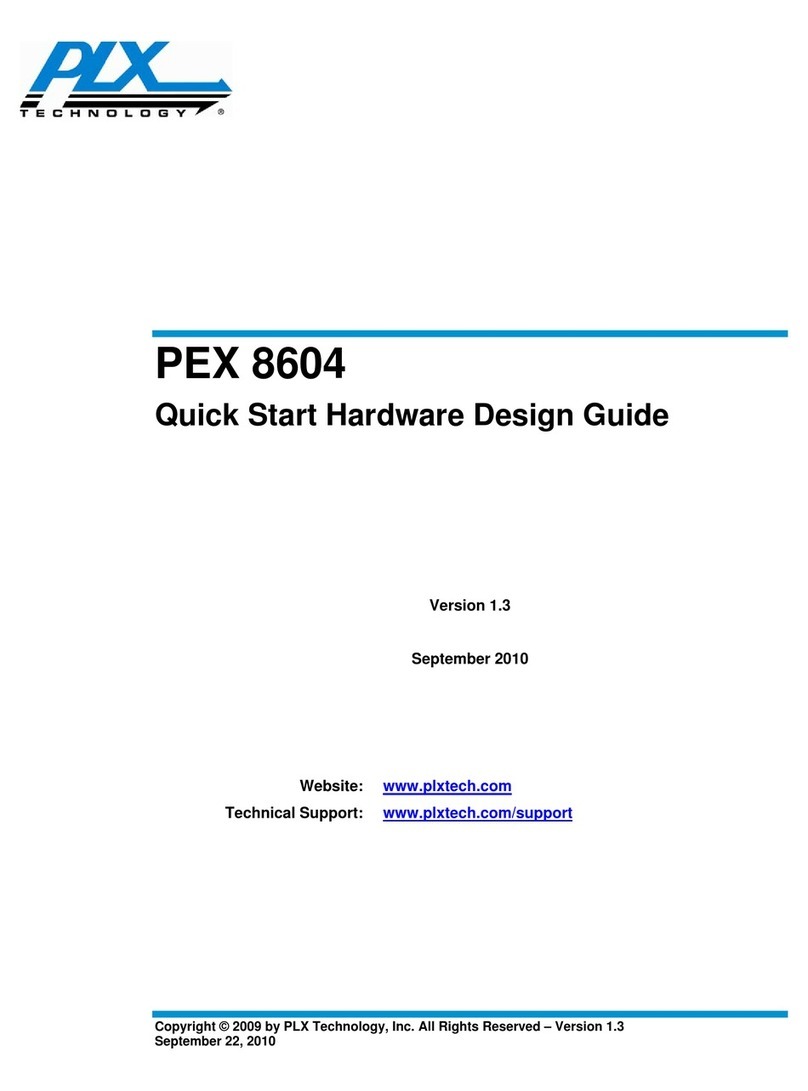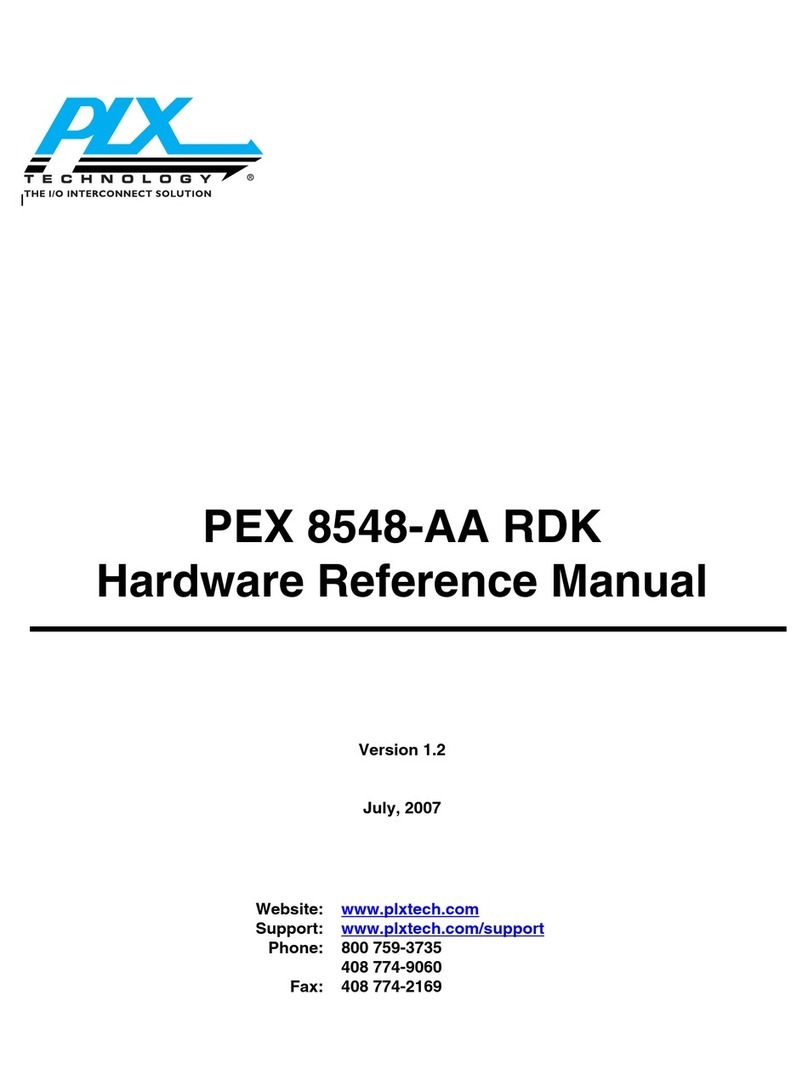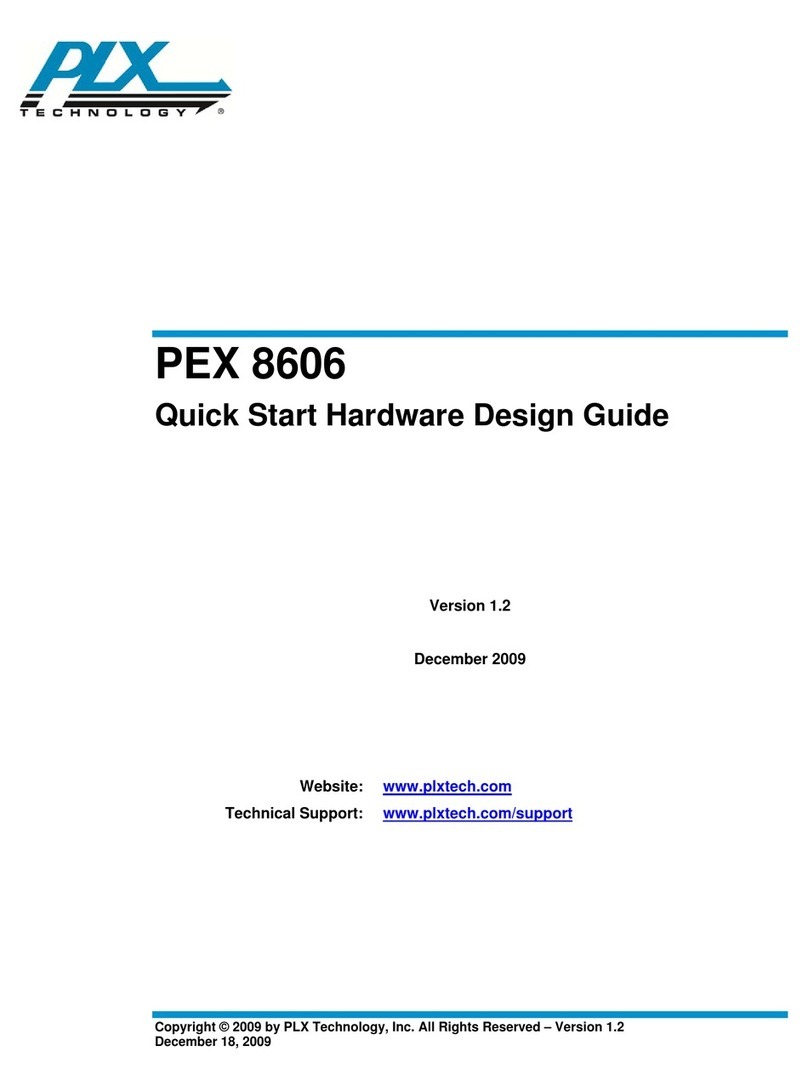
PEX 8114RDK-R Hardware Reference Manual, Version 3.2
© 2008 PLX Technology, Inc. All Rights Reserved. iii
Contents
1General Information................................................................................................... 1
1.1 PEX 8114 Features.............................................................................................. 2
1.2 PEX 8114RDK-R Features................................................................................... 2
2System Architecture .................................................................................................. 3
3Hardware Architecture............................................................................................... 5
3.1 PEX 8114 Bridge Device...................................................................................... 5
3.2 JTAG Interface..................................................................................................... 5
3.3 Serial EEPROM Interface..................................................................................... 5
3.3.1 Serial EEPROM Contents............................................................................... 5
3.4 Strapping Switches .............................................................................................. 6
3.4.1 Switch SW3 – PCIXCAP Control .................................................................... 6
3.4.2 Switch SW5 – Strapping and RefClk Pin Control............................................ 6
3.5 PCI Express Interface.......................................................................................... 7
3.5.1 RefClk............................................................................................................. 7
3.5.2 PERST#.......................................................................................................... 7
3.5.3 Lane Status LED Indicators............................................................................ 7
3.5.4 Hot Plug.......................................................................................................... 7
3.6 PCI-X Interface..................................................................................................... 8
3.6.1 PCI RST#........................................................................................................ 8
3.7 Power................................................................................................................... 8
3.7.1 Board Power................................................................................................... 8
3.7.2 PEX 8114 Bridge Device Power ..................................................................... 8
3.7.2.1 PEX 8114 Voltage Generation................................................................ 8
3.7.2.2 PEX 8114 Voltage Sequencing............................................................... 9
3.7.3 PCI Express Power......................................................................................... 9
4Mechanical Architecture .......................................................................................... 10
4.1 Monitoring Point, LED Indicator, and Control Summary..................................... 10
4.1.1 Monitoring Points.......................................................................................... 10
4.1.2 LED Indicators.............................................................................................. 11
4.1.3 Controls ........................................................................................................ 11
4.2 Layout Information ............................................................................................. 12
4.2.1 Trace Routing Design Rules......................................................................... 12
4.2.2 Power Decoupling......................................................................................... 12
4.2.3 PCB Layer Stackup ...................................................................................... 13
5References.............................................................................................................. 14
6Bill of Materials and Schematics.............................................................................. 15
